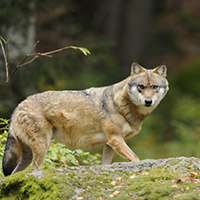While conservation areas have helped European biodiversity to flourish, there needs to be more connection between protected areas, along with greater attention to the needs of individual species. These are some of the key findings of the EU-funded SCALES (Securing the Conservation of biodiversity across Administrative Levels and spatial, temporal, and Ecological Scales) project, a major five-year study that assessed the management of Europe's natural habitats. Completed in the summer of 2014, the project has since issued a final report and made available an online interactive tool for policymakers.
The SCALES project focused on the European nature protection network Natura 2000. With over 26,000 onshore areas and covering around 17.5% of the area of the EU, Natura 2000 is now the largest network of nature reserves in the world. What this network lacks, however, are functioning connections between these individual protected areas. These would allow rare species to migrate between them, securing long-term genetic stability for the populations.
Taking this into consideration, the final report details how more action is needed to support species that find it harder to disperse. While birds typically have no problem migrating between nature reserves, roads can prove to be virtually insurmountable obstacles for many types of amphibians, such as frogs. The SCALES project found that an effective solution to this sort of issue was to connect smaller protected areas to large ones.
Scientists believe that this would benefit the economy as well as nature protection: natural structures – such as hedges and field margins – are important to endangered species of plants and animals, as they allow them to migrate through the agricultural landscape. At the same time, these structures help to counter soil erosion and provide habitats for pollinating insects, which increase the agricultural yield of these areas.
In the long term, says the project's report, connections that allow species to migrate over large distances, following habitats which have shifted as a result of climate change, will be of particular importance. Furthermore, species which move over large areas – such as the white stork or the wolf – should be managed in cooperation with neighbouring countries.
Ultimately, the scientists behind the SCALES project would like to see minimum standards for nature conservation to be observed in areas between protected areas as well. These minimum standards, they say, would have no negative impact on agricultural or forestry production.
Project results have also been presented in an easy to use interactive tool, designed specifically for the needs of policy and decision-makers. The tool also provides access to a range of biodiversity data and maps compiled or created over the course of the project. This tool is the first of its kind, and will hopefully lead to new innovative ideas of how complex conservation issues are addressed.
With a total budget just under EUR10 million, the SCALES project has been one of Europe's largest biodiversity research projects, with regional case studies covering the United Kingdom, Finland, Poland, France and Greece.
Provided by CORDIS























